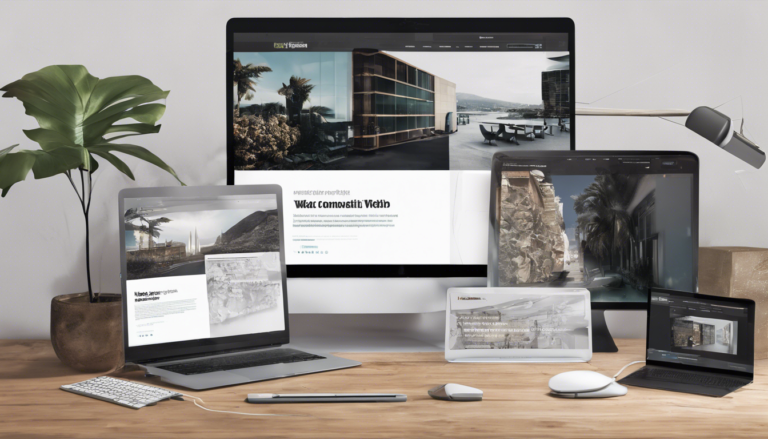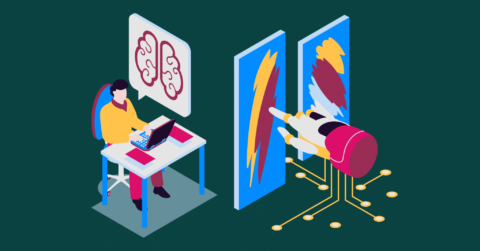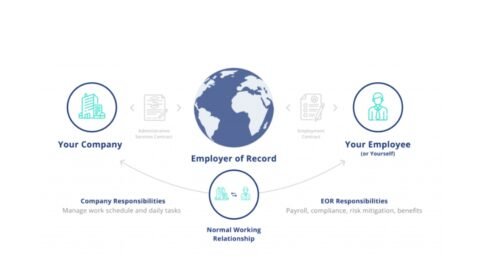In today’s digital landscape, web design plays a crucial role in shaping a company’s online presence. As businesses strive to make a lasting impression on their target audience, the importance of a well-crafted website cannot be overstated. However, many are left wondering about the true cost of web design and the factors that influence pricing. This article aims to shed light on these aspects, helping businesses make informed decisions when working with a web design company.
The journey to create a stunning website involves various elements that contribute to its overall cost. From understanding the web design process to breaking down cost components, this article will explore the intricacies of web design pricing. It will also delve into long-term considerations that businesses should keep in mind when investing in their online presence. By the end, readers will have a clearer picture of what goes into determining the true cost of web design and how to approach this essential aspect of their digital strategy.
Understanding the Web Design Process
The web design process is a complex journey that involves several crucial stages, each contributing to the creation of an effective and user-friendly website. By comprehending these stages, businesses can better appreciate the effort and expertise required, which ultimately influences the cost of web design services.
Discovery and Planning Phase
The discovery and planning phase serves as the foundation for the entire web design project. During this stage, web design companies work closely with clients to gain a deep understanding of their business, target audience, and project goals. This phase typically lasts 2 to 4 weeks, sometimes extending up to 6 weeks for more complex projects.
Key activities in this phase include:
- Needs assessment: Evaluating the organization’s long-term objectives and internal/external influences.
- Research: Conducting competitor and industry analysis, as well as user interviews.
- Site goals review: Identifying customer and business needs the website must address.
- Analytics review: Studying current site performance using tools like Google Analytics.
- Conversion review: Assessing elements that are converting well or poorly.
- User persona creation: Developing typical user profiles to inform the design process.
- Sitemap creation: Outlining the hierarchy and structure of website content.
- Wireframe development: Creating low-fidelity mockups to visualize page layouts.
By the end of this phase, the web design team should have a clear understanding of the project scope, goals, and target audience, enabling them to create a tailored strategy for the website’s development.
Design and Development Stage
Once the planning phase is complete, the project moves into the design and development stage. This is where the website begins to take shape, both visually and functionally.
The design process typically involves:
- Creating high-fidelity wireframes: Developing more realistic content, fonts, and button styles.
- User Interface (UI) design: Applying brand guidelines and creating visual elements.
- User Experience (UX) design: Optimizing the site’s flow and functionality for user engagement.
- Developing clickable prototypes: Using tools like Invision to create interactive mockups.
- The development process includes:
- Setting up hosting and version control systems.
- Installing the Content Management System (CMS).
- Building front-end mobile responsive templates.
- Creating databases and custom fields for content management.
- Integrating plugins and third-party tools.
- Populating the site with content.
- Optimizing code for improved site speed and SEO.
During this stage, regular communication between the web design team and the client is crucial to ensure the project aligns with the initial goals and expectations.
Testing and Launch
The final stage of the web design process involves rigorous testing and preparation for launch. This phase is critical to ensure the website functions correctly across all devices and browsers.
Key activities in this stage include:
- Cross-browser and device testing: Ensuring compatibility with various browsers and devices.
- User acceptance testing: Inviting small groups to provide feedback and identify issues.
- Final SEO checks: Conducting a comprehensive SEO audit.
- Installing tracking tools: Setting up analytics to monitor website performance.
- Client training: Providing guidance on how to manage and update the website.
- Bug tracking and fixing: Addressing any issues that arise post-launch.
After launch, ongoing maintenance and optimization are essential to keep the website running smoothly and effectively. This may include regular updates, security checks, and performance analysis.
Understanding these stages helps businesses appreciate the complexity of the web design process and the expertise required at each step. This knowledge can lead to more informed decisions when selecting a web design company and budgeting for a website project.
Breakdown of Web Design Cost Components
The true cost of web design encompasses various components, each contributing to the overall price of creating a website. Understanding these components can help businesses make informed decisions when working with a web design company. Let’s explore the key elements that influence web design pricing.
UX/UI Design
User Experience (UX) and User Interface (UI) design play a crucial role in determining the success of a website. A well-crafted design captures users’ attention and encourages them to take action, while a poor design may drive them away. The UX/UI design process typically involves three main stages:
- Research: This stage includes analyzing competitors, defining the target audience, and understanding their preferences.
- Wireframing: Wireframes provide a layout of the final website, showcasing page structure, navigation, and element placement.
- Prototyping: An interactive website demo with minimal features is created to gather early feedback from stakeholders.
The cost of UX/UI design can range from $750 to $5,000, depending on project requirements and complexity. Some popular design tools used by professionals include Adobe Creative Cloud, Zeplin, Sketch, and InVision.
Frontend and Backend Development
Frontend development focuses on the visible and interactive aspects of a website, while backend development powers the server-side functionality.
Frontend Development:
- Begins after the UX/UI design process
- Involves creating responsive layouts and implementing complex animations
- Requires expertise in languages like HTML, JavaScript, CSS, Vue, React, and Angular
- Costs can range from $1,000 to $12,500
Backend Development:
- Forms the core of the website, handling data processing and storage
- Involves creating APIs, integrating third-party services, and managing databases
- Utilizes technologies such as Ruby on Rails, Django, Laravel, and Node.js
- Costs typically range from $4,000 to $12,500
The complexity of queries, data processing tasks, and integrations with external services significantly influence backend development costs.
Content Creation and SEO
Content creation and Search Engine Optimization (SEO) are essential components of web design that contribute to a website’s success and visibility.
Content Creation:
- Involves developing high-quality, relevant content for the website
- May require hiring copywriters, photographers, or videographers
- Costs vary depending on the amount and type of content needed
SEO Integration:
- Crucial for improving online visibility and search engine rankings
- Requires additional research, planning, and implementation during the design phase
- Involves optimizing website structure, content, and technical aspects
To illustrate the cost breakdown, here’s a table summarizing the average time and cost ranges for each component:
Component Time Frame Cost Range UX/UI Design 1-2 weeks $5,000+ Frontend Development 2-6 weeks $10,000-$15,000+ Backend Development 3-8 weeks $10,000-$15,000+ CMS Development 3-8 weeks $3,000-$9,000+ It’s important to note that these figures are estimates and can vary based on project complexity, customization requirements, and the expertise of the web design team. Additionally, ongoing maintenance and updates should be factored into the overall cost of web design to ensure the website remains functional and secure over time.
Long-term Considerations in Web Design Pricing
When investing in web design, businesses must look beyond the initial costs and consider the long-term implications of their decisions. A well-designed website is not a one-time expense but an ongoing investment that requires careful planning and budgeting. Let’s explore some crucial factors that influence the true cost of web design over time.
Scalability and Future Expansions
As businesses grow and evolve, their websites need to adapt accordingly. Scalability is a critical aspect of web design that allows for future expansions without requiring a complete overhaul. A scalable website can accommodate increased traffic, new features, and additional content without compromising performance or user experience.
To ensure scalability, web designers often recommend building websites on flexible platforms like WordPress. These platforms offer a wide range of plugins and customization options, making it easier to add new functionalities as the business expands. However, it’s important to note that scalability may come at a higher initial cost but can lead to significant savings in the long run by reducing the need for frequent redesigns.
Ongoing Support and Maintenance
Website maintenance is not a luxury; it’s a necessity for maintaining a strong online presence. Regular upkeep ensures that a website remains secure, functional, and up-to-date with the latest technologies. Businesses should factor in ongoing maintenance costs when budgeting for web design projects.
A comprehensive web maintenance plan typically includes:
- Security updates and fixes
- Performance monitoring and optimization
- Content updates and SEO improvements
- Server maintenance
- User experience optimization
- Regular backups
- Browser and device testing
- Analytics and reporting
Many web design companies offer maintenance packages or retainer agreements to provide ongoing support. These services can range from basic security updates to comprehensive management of all aspects of a website. While this represents an additional cost, it’s an investment that pays off by preventing larger problems and ensuring the website continues to perform optimally.
Analytics and Performance Optimization
To maximize the return on investment in web design, businesses must continually monitor and optimize their websites’ performance. This involves analyzing user behavior, tracking key metrics, and making data-driven improvements to enhance user experience and achieve business goals.
Performance optimization techniques include:
- Image optimization to reduce page load times
- Code minification for faster processing
- Implementing efficient caching mechanisms
- Optimizing content delivery methods
By investing in ongoing performance optimization, businesses can:
- Improve user engagement and reduce bounce rates
- Enhance search engine rankings
- Increase conversion rates and revenue
- Provide a seamless experience across desktop and mobile devices
- Reduce server loads and hosting costs
It’s worth noting that performance optimization is an ongoing process that requires regular attention and expertise. While it may seem like an additional expense, the long-term benefits in terms of improved user experience, higher search engine rankings, and increased conversions often outweigh the costs.
In conclusion, when considering the true cost of web design, businesses must look beyond the initial design and development expenses. By factoring in scalability, ongoing maintenance, and performance optimization, companies can make informed decisions that lead to a more effective and cost-efficient online presence in the long run. Remember, a well-maintained and optimized website is an invaluable asset that continues to deliver returns on investment long after its initial launch.
Conclusion
To wrap up, the true cost of web design goes beyond the initial price tag. It has an influence on various factors, including the complexity of the design process, the expertise required for development, and the ongoing needs for maintenance and optimization. By understanding these components, businesses can make informed decisions and allocate their resources effectively to create a website that not only looks great but also performs well over time.
In the end, investing in quality web design is crucial for establishing a strong online presence. While it may require a significant upfront investment, the long-term benefits in terms of user engagement, brand reputation, and business growth make it worthwhile. Remember, a well-designed website is not just a one-time expense but an ongoing asset that continues to deliver value to your business for years to come.
FAQs
1. How much does it typically cost to design a website?The cost of designing a website in India can vary significantly. A basic website may range from ₹ 50,000 to ₹ 1,00,000 ($600 – $1200), a small business website might cost between ₹ 80,000 to ₹ 1,50,000 ($950 – $1800), and an e-commerce website could range from ₹ 1,50,000 to ₹ 4,00,000 ($1800 – $7200).
2. What is the average cost to redesign an existing website?The cost of redesigning a website can vary based on the size, functionality, and the service provider chosen. On average, redesigning a website costs between $3000 and $75,000. Specifically, agencies might charge between $5000 and $75,000, freelancers could charge from $3000 to $10,000, and in-house or DIY redesigns typically run from $800 to $5000.
3. What are the typical expenses associated with building a website?Building a website involves various costs depending on the platform, design complexity, additional features, and whether you engage a professional web developer. Generally, the cost for a one-page website can range from $500 to $5,000.
4. Why is web design often perceived as expensive?Web design demands a high level of expertise and a diverse skill set, including graphic design, coding, and user experience (UX) design. These requirements make the process complex and research-intensive, justifying the higher costs associated with professional web design services.





